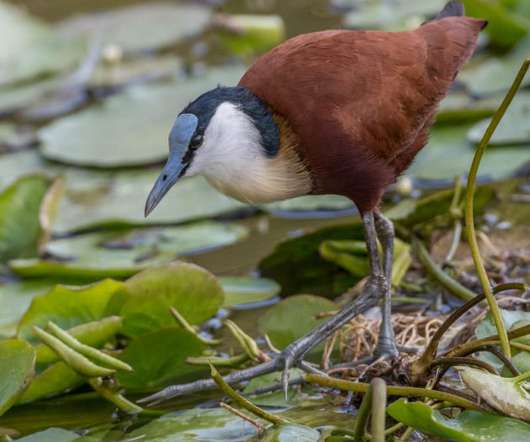Birding the Kruger Park (4): Letaba area
10,000 Birds
AUGUST 22, 2022
As the national bird of Namibia, Zambia, and Zimbabwe, the African Fish Eagle is usually very busy whenever it stays in these countries, giving speeches, opening shopping centers, etc. While hoopoes are in their own family, DNA studies suggest that the hoopoe diverged from hornbills, and the wood-hoopoes and scimitarbills from the hoopoe.












Let's personalize your content